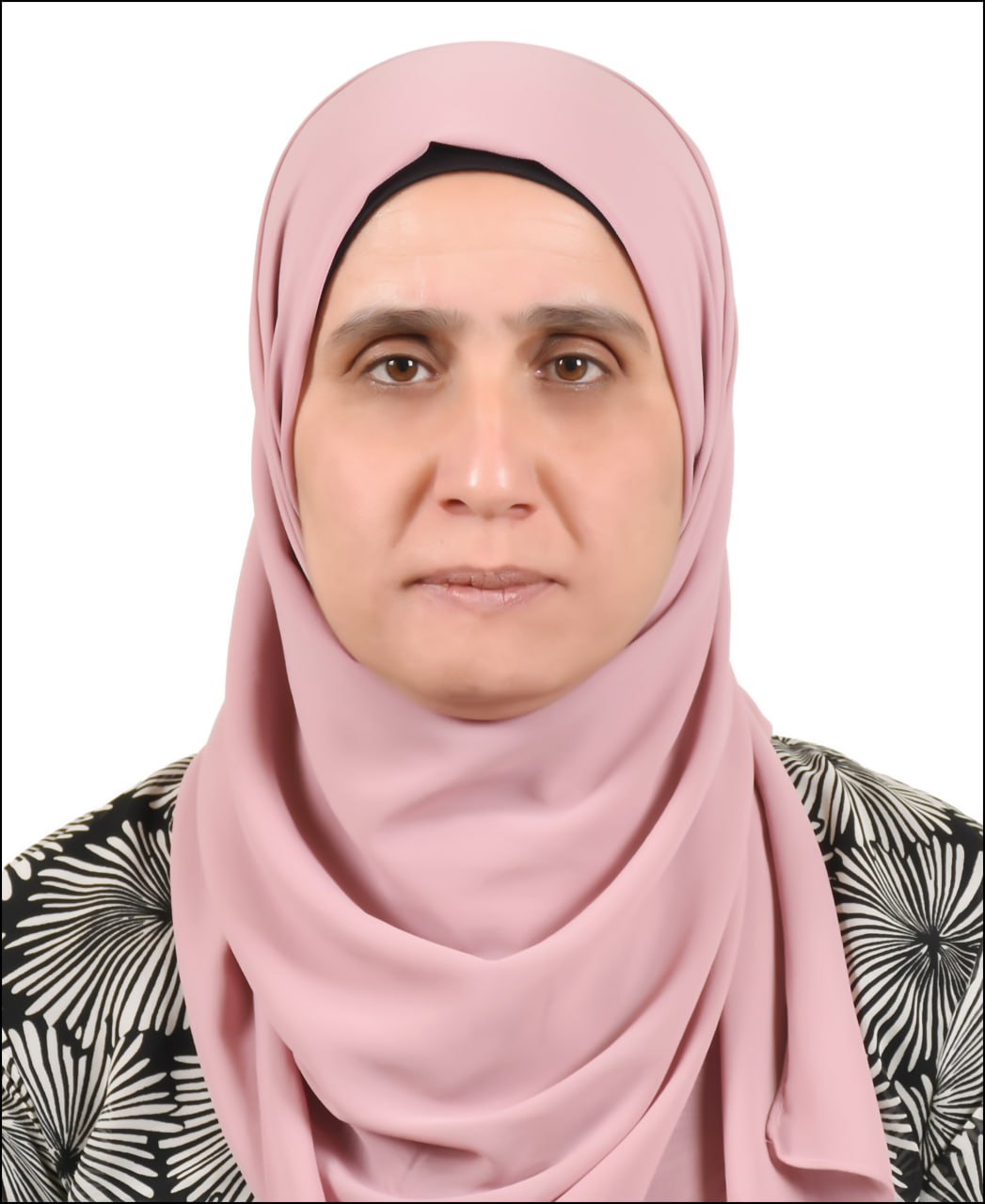
Nadia Qahtan Mahmood
Research Interests
| Gender | FEMALE |
|---|---|
| Place of Work | Mosul Medical Technical Institute |
| Department | Nursing Techniques |
| Position | Lecturer |
| Qualification | Ph.d |
| Speciality | biology / microbiology |
| nadiaalshorify@ntu.edu.iq | |
| Phone | 07705279364 |
| Address | المعهد التقني الطبي / قسم تقنيات التمريض, ---, Mosul, Iraq |
Skills
Isolation and identification of bacteria (85%)
using modern technique diagnosing bacteria such as vitek (90%)
Academic Qualification
Bachelors degree in education \ department of biology - college of education 2000- 2001 ,
Jan 10, 1999 - Jan 7, 2001M.Sc. in Biotechnology , Department of Biology , College of Education, University of Mosul .
Jan 9, 2001 - Mar 5, 2004Ph.D. in Microbiology from the College of Education for pure Sciences , Department of Biology , University of Mosul
Jan 9, 2019 - Dec 1, 2023Publications
Prevalence of Staphylococci Among Dental Staff and Their Antibiotic Resistance Pattern.
Feb 3, 2023Journal Al-Rafidain Dental Journal
publisher Nadia Q. Mahmood , Ghada Younis Abdulrahman , Najwa Ibrahim Khaleel
Issue 1
Volume 23
Abstract Aims: The study aims to estimate the carriage of Staphylococci spp on nares and hands among dental staff and their antibiotic resistance pattern. Materials and Methods: 100 samples were collected from the nose and hands of dental workers (dentists and assistants) in the teaching hospital of the College of Dentistry, University of Mosul from the period 17th Dec. 2020 to 9th Feb.2021. The isolates were diagnosed based on phenotypic traits, microscopy, biochemical test, and the use of the vitek – 2compact device to confirm the species, 66 isolates showed that they were able to ferment mannitol, 32 isolates from the hands, and 34 isolates from the nose while the other isolates showed an inability to ferment mannitol sugar. All Staphylococcus isolates were Gram-positive, catalase 100%, coagulase (18.75%) for hand isolates, and (52.9%) for nosal isolates. Using the vitek 2-compact (40) isolates of fermented mannitol were diagnosed and the results were as follows (20) isolates Staph.aureus 14; (70%) from nose and 6(30%) from hand, 5 isolates of Staph. lugdunensis ;4 (80%) from nose ,1 (20%) from hand .4 isolates Staph. Saprophyticus; 2 (50%) from nose, 2(50%) from hand,2 isolates of Staph. hominis; (100%) from hand,3 isolates of Staph. warneri 2;(66.67%) from nose, 1(33.33%) from hand and one isolate of Staph.sciuri 1,(100) from hand and one isolate of Leuconostoc mesenteroides from hand, four isolates the device couldn't diagnose. The sensitivity of the different isolates to oxacillin was determined with minimum inhibitory concentration (MIC) using vitek2-compact device as oxacillin indicates methicillin in the device. The isolates differed in their resistance to the antibiotic oxacillin where the highest resistance was the percentage to each of Staph.lugdunensis and Staph.sciuri the resistance rate reached 100% followed by Staph.aureus were the resistance rate reached 80% then Staph.warneri 66.67% , Staph.hominis 50% and Staph. Saprophyticus 25% . The sensitivity of different isolates to antibiotics was determined by using Kirby –Bauer method using seven types of antibiotics Staphylococcus isolates showed resistance to both oxacillin and methicillin at percentage 100% except for Staph. Saprophyticus where the resistance was 50%.
The Inhibition Effect for Growth of the Fungus Rhizoctonia solani Using Alcoholic Extract for some Plants
Mar 4, 2013Journal مجلة علوم الرافدين
publisher مها اكرم الرجبو ، ناديه قحطان محمود
Issue 2
Volume 24
ABSTRACT The fungus Rhizoctonia solani was isolated from rice, this fungus causes many diseases for plant and crops damage. To control this fungus by a safe method without causing any damage to environment, animal and human, we prefer using the alcoholic extract of some plants. The effect of alcoholic extract for leaves of Cassia spp., Salvia officinalis and Achillea millefolium was tested by using four concentrations for each extract 5,10,15,20 mg /ml these results were compared with antifungal Trichoderma harzianum and Trichoderma viride and it was noticed that these extracts have a high inhibiting effect against this fungus. The percentage of inhibition was 100% for all extracts and all concentrations that used in this study except the concentration 5 mg / ml of alcoholic extract for the leaf of Cassia spp. the percentage of inhibition was 90.3%. This proves that the alcoholic extract of the leaves has a high ability for inhibition similar to the biocontrol agent that was used.
باستخدام المستخلصات الكحولية لأو راق نبات السنامكي والميرامية والاخيلية الالفية Fusarium graminearumمكافحة الفطر
Jan 2, 2012Journal مجلة التربية والعلم
publisher ناديه قحطان محمود
Issue 2
Volume 25
ABSTRACT In this study the effect of alcoholic leaves extracts of Cassia spp, Salvia officinalis and Achillea millefolium was tested on the growth of the fungus Fusarium graminearum which was isolated from rice. Four concentration (5,10,15,20 mg/ml) for each plant were used. it was noticed that the inhibition effect of these extracts increase with increasing the concentration of them Prcentage of Cassia spp, Salvia officinalis, Achillea millefolium were (35.7, 100, 100%) respectively at the concentration 20 mg/ml. These results were compared with bioresistor Trichoderma harzianum, Trichoderma viride since they gives high antagonistic efficiency reached to 100 % Therefore we advice to use these plant extracts instead of chemical substance (fungicide), Because they are cheap, safety in use and don’t have any poisons effect on plant, animal, human and environment in addition the achieving of these extracts was very easy and available in nature.







